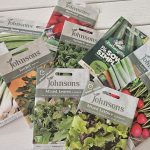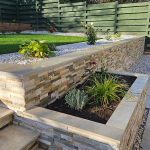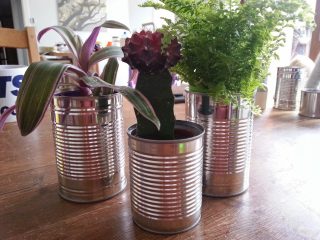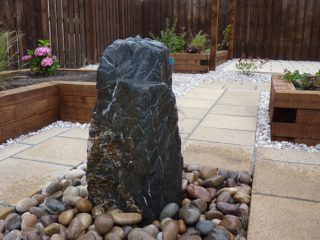The Cream of Cornwall…
Tuesday, 25 October 2011
(…and we don’t mean the clotted variety.)
The temperate climate in Cornwall means that it’s a haven for sub-tropical plants and creating horticultural delights. On a recent adventure to the South West we couldn’t resist sampling some of these gardens. We couldn’t fit in all the gardens, too many for our short visit, so we carefully chose five to explore…
St Michael’s Mount
Sitting proudly on an island in Mount’s Bay, just off the coast of Cornwall, St Michael’s Mount is known primarily for its stunning castle with fairy tale turrets. The castle indeed is well worth a visit, just make sure you are feeling fit as you have to tackle a pretty challenging slope on the way up. To get to the island itself you may be able to walk across the causeway (although take what NT say about on their website with a pinch of salt!). If the tide is in and the causeway covered, there is a merry fleet of locals constantly ferrying eager visitors back and forward between Marazion and the island. From the Castle, you can get wonderful views back to the mainland, across the ocean waves and of course, of the stunning gardens below. Like the Castle, the gardens are built into a rocky cliff face.
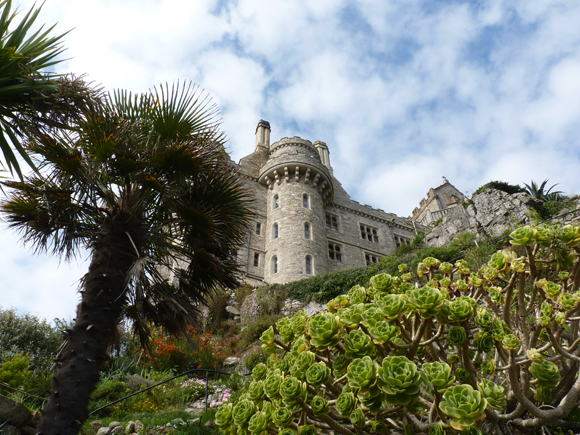
The view of the Castle up through the gardens
That along with the wind blasting off the sea makes it a challenging space but the gardeners have managed to create the most beautiful of spaces. Both from above and below, the different areas are fantastic to view and despite the coastal winds, many sub tropical plants – normally more common in the likes of Mexico or South Africa, which we couldn’t risk in Scotland, are flourishing. From aloe and aeonium to tropical palm trees, it is like walking into a different world. The garden is entered along the most stunning displays of Kniphofia rooperi, a traffic light display leading you along to the main gardens. Once you have wandered around past the pillbox look-out you can then wind your way (hmm, does that make it sound like the gentle slope? Ok, you can struggle and sweat your way, especially when 22 weeks pregnant!) up through the zig zagging gardens for splendid views across the Celtic Sea then through into the walled garden. The walled garden has recently been redesigned with each level a different colour combination, designed to be seen from above. Indeed the whole garden has been cleverly designed to be viewed from the Castle. We can just imagine the Lady of the Castle demanding that she could see every plant from her perch within the Castle. Now, that’s a proper diva!
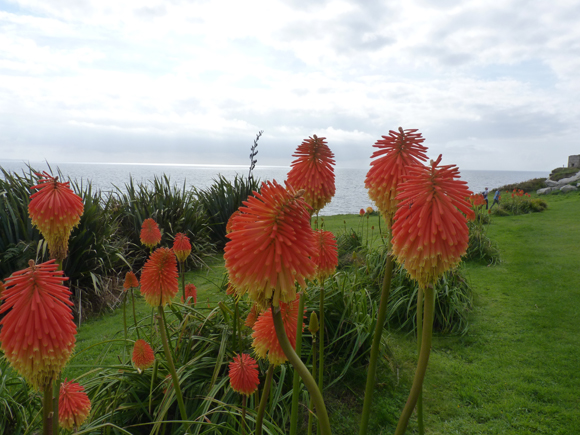
Kniphofia rooperi make a statement as you walk round to the gardens
VGD Score: 8/10
The Barbara Hepworth Sculpture Garden
Hidden away in the back streets of St Ives, the Barbara Hepworth Museum and Sculpture Garden pays homage to the great artist. Affiliated to the Tate Gallery in St Ives, you can get a discount if you visit both in the same day. Like many artists, Barbara moved to St Ives when WWII broke out and stayed there until she died in 1975. Both the museum and gardens are limited in space but there was no limitation to the vision and skills Barbara used to create the wonderful sculptures on show. Like most gardens in Cornwall, the BHSG is filled with sub-tropical planting.
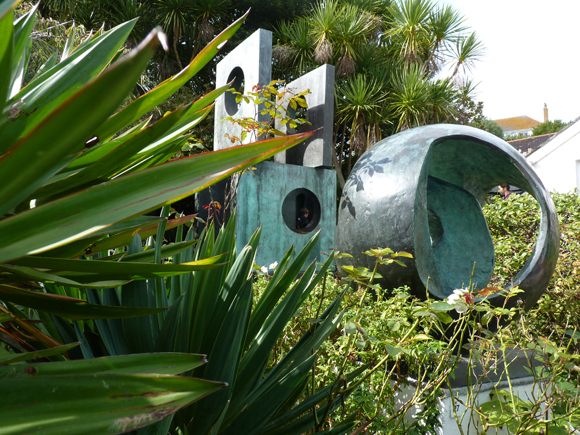
The gorgeous planting and sculptures
The planting focuses on form and texture rather than colour and provides a great back drop to the large collection of sculptures which you discover at every turn. When we visited there were artists old and young enjoying the garden, sketch pads out, taking their own inspiration. You can also view Barbara’s studio exactly as it was when she was creating her art. Indeed it looks like she has just nipped into the house to make a cuppa. This garden is a perfect example of how art and horticulture can make a great partnership and how a relatively small space can be transformed into a peaceful haven with a real sense of journey.
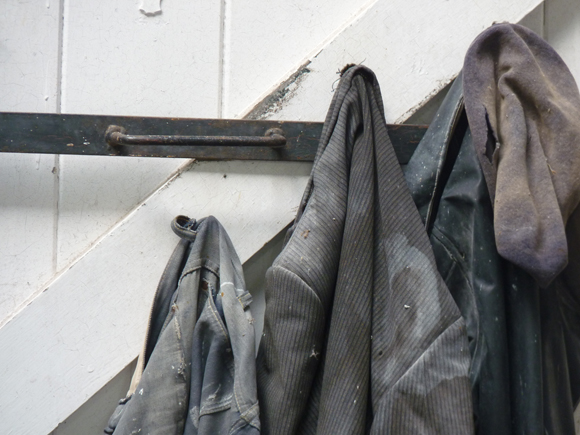
It looks like someone has just nipped off for a cuppa
VGD Score: 9/10
The Lost Gardens of Heligan
The Lost Gardens of Heligan were “found” in 1990 when it was decided that the overgrown and neglected gardens would be brought back to life. The gardens have been in the Tremayne Family for over 400 years and have seen a lot of changes throughout that time. At the end of the 19th Century the gardens were having their hey-day but a short time later they had been left to wrack and ruin. Work began in the early 1990s to restore the gardens and let the public share in their beauty. If you are a fan of luscious lawns and perfect flower beds, Heligan isn’t the garden for you. It’s much more about the feel of the gardens, allowing some areas to run wild and for nature to take its course. Woodland walks, jungles and wildlife sanctuaries are as important as the dedicated areas for cut flowers. We did feel it was a little too wild though with a lot of weeds, even in the cut flower beds which could easily be addressed.
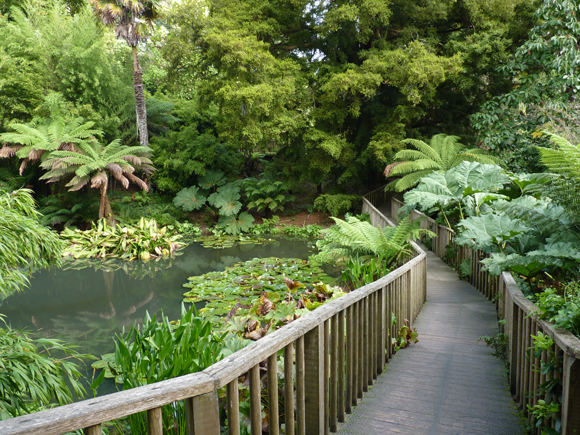
Woodland walks and jungles add to the mystery of Heligan
Huge beds are cultivated for produce grown on site and from the huge pumpkins and cabbages on show, the team are doing something right. The interpretation area showcases the wildlife to be seen around Heligan and there are lots of interactive displays and impressive use of technology to tempt visitors. A viewing station means you can watch the various birds and wildlife come and go as well as operating cameras to spy on various bird houses around the estate.
The Jungle transports you to another world, taking advantage of the Cornish climate. There are also New Zealand gardens as well as Italian, scented, floral, productive and Northern gardens, to name just a few. For kids and adults alike, the Mud Man and Mud Maid are great fun. And work is still surging ahead as Heligan comes of age. It might not be everybody’s cup of tea and is rough at the edges in many places but there is no denying that there is a certain spirit to Heligan which 400 years on can’t be ignored.
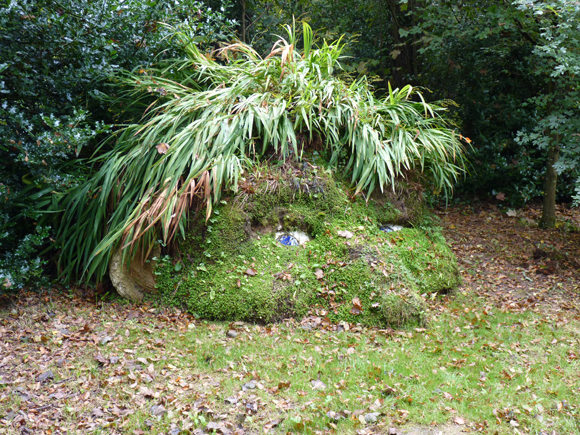
The Mud Man is very impressive
VGD Score: 6/10
Trebah Garden
Trebah Garden, hidden in the country lanes around Helston, has forged great links with the local university and is constantly moving forward. As with Heligan, it takes advantage of the temperate climate and there are a plethora of tree ferns, gunnera and jungle type plants. Bamboozle sounded more exciting on paper, promising a Bamboo Maze which in reality was just a walkway through some mass planting. However, the mass planting of Hydrangea was something to be seen. Hundreds of shrubs, all in bloom surrounded Mallard Pond, their huge mop heads demanding attention.
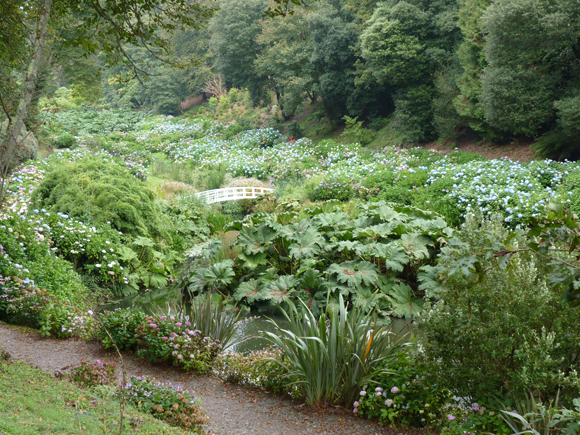
The mass planting at Trebah is very impressive
As we visited late September we had missed what would undoubtedly be a spectacular display of camellias and rhodos earlier in the year. A thoughtful area for children to play had been created and certainly there were several school groups exploring the gardens. A Koi Pond and Water Garden added another element to the garden and created a wonderfully relaxing atmosphere. From the top, a fantastic view down through the valley to the beach at the bottom showcases the extent of the garden. It’s a challenging site to explore (all of the gardens we visited were built into cliffs, not the handiest for an expectant mother but who said gardening was easy?!) but it’s worth making the effort. Trebah has its own beach at the bottom of the valley which families and school groups were making the most of too. For us, Trebah was a better all round garden than Heligan and didn’t have the rough edges of its neighbour. Oh, and the fruit scones and bacon butties in the café were definitely worth a mention too!

The water garden was wonderful to see
VGD Score: 7/10
The Eden Project
We were worried that our expectations of Eden were too high and that we were going to be disappointed. As we drove down the country roads in Cornwall leading to Eden, we eagerly kept looking for our first glimpse of the famous Biomes. However, it’s not until you have paid and exited out of the Visitor Centre that you are treated to your first view of the striking structures, like aliens rising out of the hillside. From that moment onwards we were completely smitten.
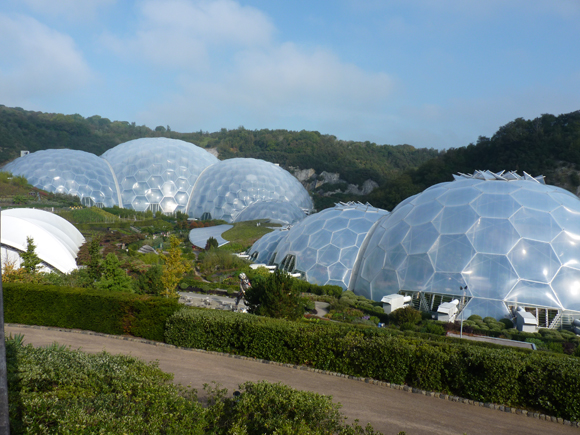
The biodomes are like aliens rising out of the land
Until you have been there you cannot understand the sheer size of the Biomes, the extent of the site and the transformation that has been taken the site from a china clay pit to a horticultural and educational haven. Our excitement was summed up by Michael’s comment that it was “like Disney for gardeners”. Whilst likening the attraction to such a commercial operation would perhaps be doing Eden a disservice, it showed just how immense and overwhelming it was. A land train regularly transports visitors around the site but despite being built into yet another hillside, Eden is much easier to get around than all the other gardens we visited. Everywhere you go, the Biome structures dominate but there is also architectural interest in the Core (the interpretation centre) and the Stage. On the day we visited temperatures were soaring which ironically meant the site was very quiet.
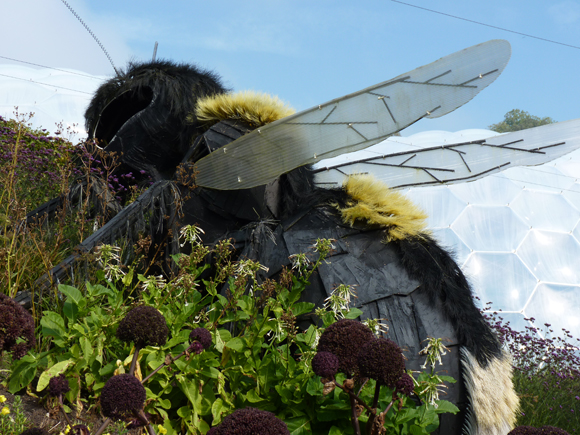
Eden has education at its core and does it very well
Many visitors think the whole site is under cover and thus keep their visit for a rainy day. Don’t be fooled though, most of the site is outdoors and there is plenty to wander around and see. The most impressive thing for us is the level of education provided throughout and the interesting way it is done. Every opportunity is taken to educate but it was always done in a fun way and you never felt it was forced down your throat or that you were being patronised. The tables in the café had fun facts on them about produce. Even the toilets had fascinating information on hand dryers they were trialling. Down in the Core, there was a myriad of information to explore. We particularly loved the interactive smart car, especially when it told us it was more efficient to use a dishwasher than hand wash!! Back outside the WEEEman is an impressive example of how recycled materials can be used to create a HUGE sculpture towering over the gardens. Computer mice were used for teeth and a microwave heart brought a new meaning to being warm-hearted!
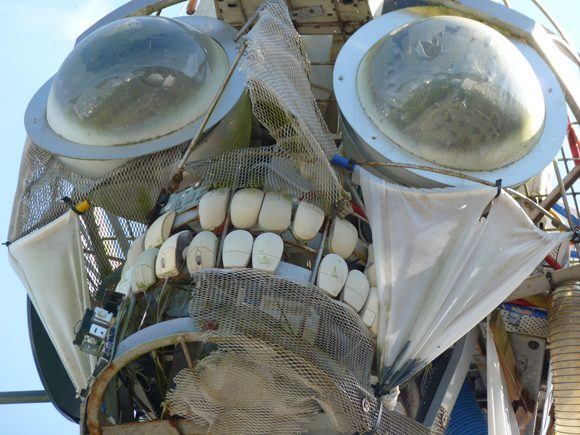
The WEEEman is incredible
Having explored the outside areas which featured everything from flowerless gardens and insect attracting plants to prairies and wild Cornwall, we eventually made our way to the Biomes to see if they were as impressive on the inside as they were from outside. First we visited the Mediterranean Biome. Not only is it filled with sub tropical plants there was a plethora of sculptures, structure, pots and features all relevant to the theme. Now, we only had the Rainforest Biome left to see. Having left this until the afternoon of a late Indian summer’s day, the heat was authentically overpowering when we entered. The viewing platform had been closed due to humidity but in reality I would never have made it up the steps to the look-out point. Regardless, the space was still fantastic to see. You would never believe you were in an indoor space with everything from lorries to native houses featuring in the Biome.

Inside the Biodomes was impressive too
It was certainly humid and we were glad to exit but it was a fantastic experience. A quick visit to the café and shop then two exhausted but very happy gardeners made their way home. If you are remotely interested in gardens, and even if you are not, Eden is a must-see.
![The views of the Biodomes were incredible from all angles]](https://vialiigardens.co.uk/wp-content/uploads/2011/10/blog-creamcornwall-13.jpg)
The views of the Biodomes were incredible from all angles]
VGD Score: 10/10
Let us know what you think of these gardens or any others you have been to visit.
Thanks for reading.
All at Vialii
